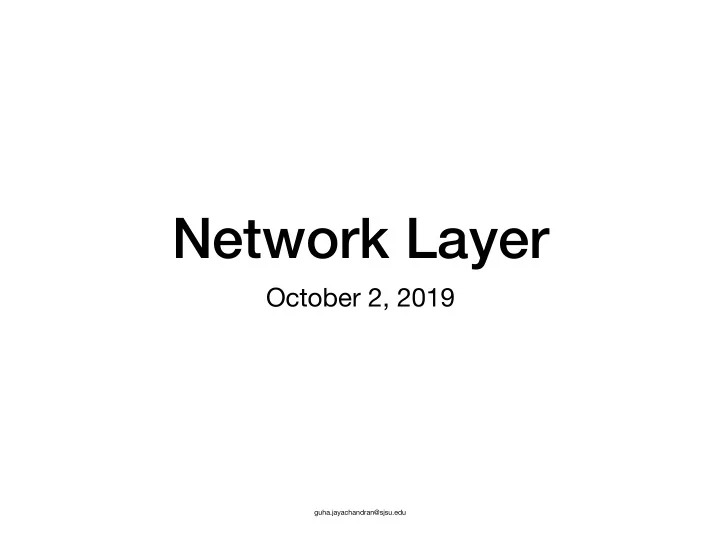

Network Layer October 2, 2019 guha.jayachandran@sjsu.edu
Layer 2: Protocol atop Layer 1 (Lightning, Plasma, etc.) Layer 1: Coin protocol (Bitcoin, Ethereum, etc.)
Layer 2: Protocol atop Layer 1 (Lightning, Plasma, etc.) Layer 1: Consensus (Bitcoin, Ethereum, etc.) Layer 0: Networking
Gossip Network • Neighbors forward messages to other neighbors • Used by almost all public blockchain protocols • Security?
P2P File Sharing (~2000) Generation 1: Central server (Napster) Generation 2: Flooding (Gnutella) Then DHTs…
Distributed Hashtables • DHTs are hashtables, but the data is distributed. Any participating node should be able to e ffi ciently retrieve the value for any key (even if it doesn’t have it locally already) • Purpose is to handle addressing over a large number of frequently changing nodes • Useful for file addressing (in distributed file storage) or routing
DHT Attributes to Consider • Autonomy and decentralization • Fault tolerance • Scalability
Kademlia • Most widely used DHT • Designed by Petar Maymounkov and David Mazières in 2002 • Each node has an ID and the distance between them is the xor of the IDs • Each search brings you one bit closer • Contact O(log n) nodes (common for DHTs) • Used by BitTorrent, Gnutella (which adopted it after earlier using flooding), Ethereum, IFPS, and much more
Network Attacks • How can you tell if a protocol is susceptible to a denial of service attack? • What about network partitions? • What would happen if an undersea cable was cut? • What can you do to mitigate?
Final Projects • Poster session and brief report • Work alone or group of up to 3 • All members of a group get the same grade • More expected from groups • Choose something you find interesting • But ask for help if you struggle getting an idea • You have many options • Implement a system, for example an interesting smart contract, a protocol, a game, a key management system, etc. • Conduct research, for example design an algorithm, design a protocol, benchmark existing systems, perform cryptographic analysis, write a specification, formally verify some open source code, etc. • Survey some area of technology • Check your project ahead of time in o ffi ce hours to verify appropriateness of scope
Recommend
More recommend